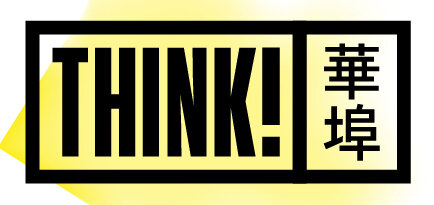Think!Chinatown’s Tribute to Corky Lee
We can only do our best to show through our art what Corky meant to us. — With much love, Yin Kong & the T!C Family
Photography: Corky Lee, Audio + Storytelling: Rochelle Kwan, Storytellers: Rochelle Kwan, Cindy Trinh, Michael Stewart Videography: Eric Jenkins Sahlin, Hai-Li Kong, Kamau Ware, Art Installations: “Photographic Justice” by Jia Sung & “Newsstand Lantern” by Prisca Choe
Here is his bio as written by Corky himself:
As a self-taught photographer for over four decades, Corky Lee always maintained that he can’t sing or dance, write or edit, but if you gave him a camera, you wouldn’t regret it. Known as the “Unofficial Undisputed Asian American Photographer Laureate”, Corky made a conscious decision during his lifetime to commit himself to making Asian Pacific Americans more visible in the American landscape. His images not only document but also visually empower and enrich others to examine stereotypes and fight for social causes and inequality.
While in junior high school, Corky saw the famous champagne photograph that commemorated the 1869 completion of the Transcontinental Railroad. In the picture, it showed railroad workers posing around the Central Pacific and the Union Pacific Railroads, symbolizing how the tracks united the Eastern and Western United States. Corky had learned that the Chinese railroad workers played a significant role in building the railroad to the West and that many had lost their lives, worked in harsh conditions in the Sierra Nevada mountains, and were unequally treated and discriminated against, yet they were not in the photo.
To right a wrong, years later, at an OCA National Conference in Utah, with a bullhorn in hand, Corky orchestrated a group photo in front of two locomotives with Asians in the picture which made it in the New York Times. In 2014, Corky went to Promontory Point Summit, Utah, got permission from the US Dept of Parks and climb up a ladder, so he could to re-create the champagne photo with over 100 Asian Americans at the 146th anniversary of the re-enactment of the Completion of the Transcontinental Railroad. The picture and story quickly made it on the front cover of the local Salt Lake City newspaper.
Because of Corky’s efforts, word spread quickly and by the 150th Anniversary there were more than 500 Asian Americans who came from across the country convening at Promontory Point Summit, marking a historic day. As Connie Young Yu said it best, it was a far cry from 50 years ago when her mom, a descendant of a Chinese railroad worker, came. Now there are even more descendants and their families. This story would not have been magnified without Corky’s photo project which helped to draw attention to the early Chinese railroad workers who had been omitted from history.
In 1975, one of Corky’s photographs made it on the cover of The New York Post. It showed a Chinese-American man bleeding from the forehead and being hauled away by the police. The day the picture was published, Mr. Lee said, 20,000 people marched from Chinatown to city hall to protest police brutality. In 1983, he captured another big moment. A year after Vincent Chin, a Chinese American man, was bludgeoned to death by laid-off auto workers in Detroit who thought Chin was Japanese and had stolen their jobs, Mr. Lee photographed the protests that erupted when these men were freed with no trial. The incident was a watershed moment for Asian Americans. For the first time in recent history, the API community was confronted with the realities of racism, and the fact that they were just as vulnerable as African Americans or any other cultural group.
Corky’s body of work, which has been described as “only a small attempt to rectify omissions in our history text books,” has appeared in numerous ethnic and mainstream press including among others Time magazine, The New York Times, The Village Voice, Associated Press, The Villager and Downtown Express. His unyielding passion for photojournalism to tell the story of the Asian Pacific American experience and their communities so that they would not be forgotten has reached The Smithsonian Asian Pacific American Center, NY Historical Society, Queens Museum of Art, Chinese American Museum of LA, Chinese Historical Society and college campuses from NYU to UCLA. In an interview in AsianWeek, Corky commented: “I’d like to think that every time I take my camera out of my bag, it’s like drawing a sword to combat indifference, injustice and discrimination, trying to get rid of stereotypes”.
Aside from Corky’s expansive photography work, he was a proud member and past Commander of the Sons of the American Legion Post 1291. He along with fellow Legionnaires advocated for a Congressional Gold Medal for our Chinese American WWII veteran who served for this country. He was Chairman for the Asian American Arts Alliance and in 1988, New York City Mayor David Dinkins proclaimed May 5th as “Corky Lee Day”.
